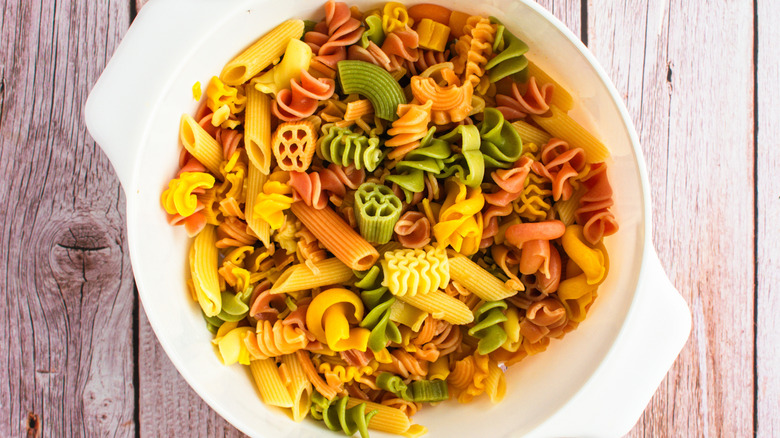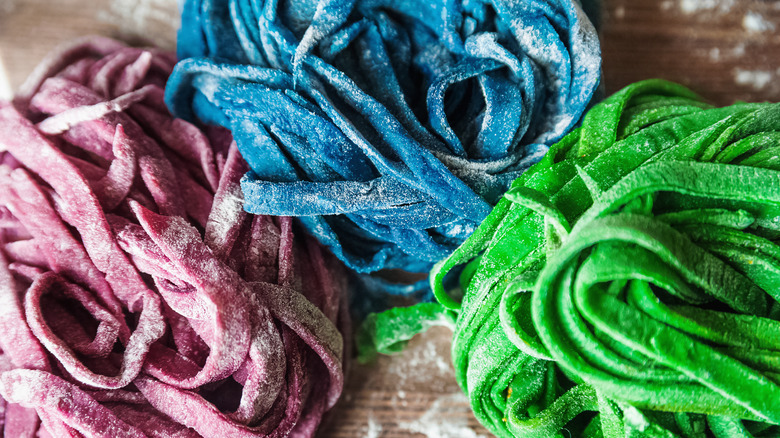Are Colored And Flavored Pastas One And The Same?
We may receive a commission on purchases made from links.
The world of pasta is vast and varied, with noodles coming in a wide range of shapes, sizes, textures, and even colors and flavors. But before you start cooking up a rainbow, you should know that colored and flavored pasta are not the same thing, at least, not always. They're different entities that both reside within the realm of customized pasta. There are flavored pasta varieties that aren't colored (like this Morelli brand garlic and basil linguine) and colored pasta shapes that aren't flavored (like rainbow striped farfalle produced by Donne Del Grano).
The main thing to keep in mind when distinguishing the difference is intent. Colored pasta is all about aesthetic appeal, while flavored pasta is about adding a new dimension of taste to a dish. The purpose in the latter is adding flavor — and the ingredients that get added into the mix may or may not happen to leave the pasta a different color. Although the overlap here can be difficult to differentiate, considering some natural coloring agents like squid or cuttlefish ink (black), beets (pink), saffron (gold), or kale (green) can impact both color and flavor.
When incorporating coloring or flavoring ingredients into fresh pasta, the food is typically ground into a puree then worked into the pasta dough. This is frequently the case with popular tricolore farfalle or rotini, which uses spinach for the green, beets for the red, and tomatoes for the orange. In this pasta, the finished taste is overall similar to regular classic pasta, with only very subtle taste undertones of the natural food coloring agents inside.
Food dye will color pasta but won't add flavor
If a menu description or store-bought product packaging promises "sun dried tomato rigatoni," then foodies can be pretty sure that the pasta is going to be flavored with sun dried tomatoes; whether or not the rigatoni also happens to be red-tinted is secondary. Roasted red pepper pasta would similarly feature both an orange hue and a subtle savory taste. Colorless ingredients like spices and herbs can also be used to flavor pasta, often adding punchier flavor than vegetables. Garlic powder, chopped basil, sage, tarragon, or oregano can all be worked into pasta dough to add flavor without performing an expressly aesthetic function.
On the flip side, unflavored colored noodles can function beautifully as a pop of color against understated sauces like pasta al limone or a simple basil pesto pasta dish. Beyond natural ingredients, a few drops of bottled food coloring can also be worked into the dough to achieve the same vivid hues without contributing any taste element. A batch of playful purple pasta is unlikely to taste like grapes or eggplant — it's most likely just purple-dyed pasta. Simply colored green or magenta pasta could help enliven the look of noodles in creamy recipes like Alfredo sauce, which have almost zero visual contrast against a bed of classic pale yellow pasta. Whatever color you select, keep in mind that the hue of the pasta should complement (not rival or clash with) your choice of sauce.

